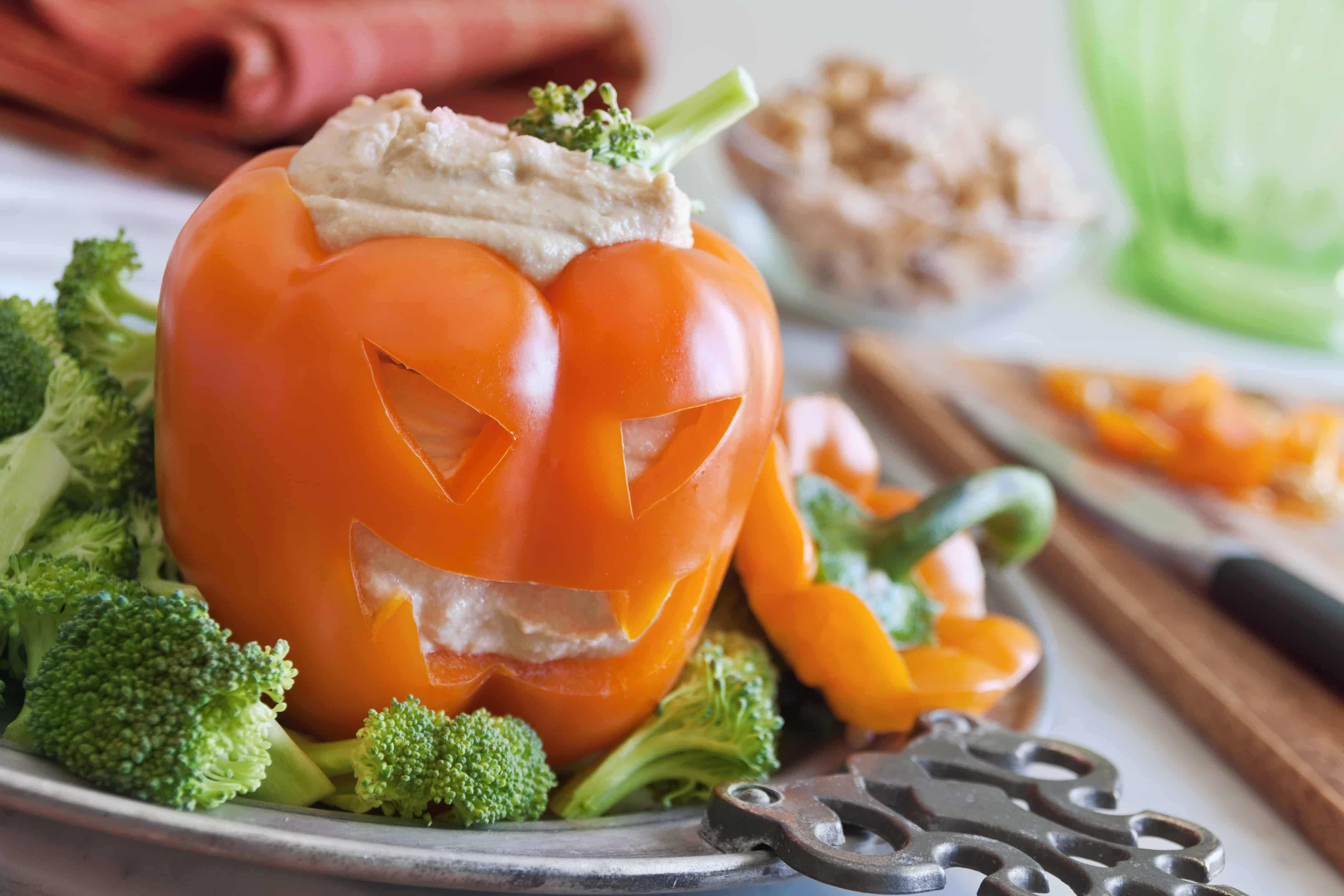
Orange is one of my favorite colors (I use it as an accent color in my kitchen year ‘round). Frankly, I like a lot of foods that are orange, too! I’m not talking about puffed cheese snacks or candy corn (I don’t care for either). I’m going straight for the produce aisle here. If you need a refresher on why you should be putting all that golden goodness on your plates right now, this is it. Let’s dig in…
C is for Carotenoids
Carotenoids are yellow, orange, and red plant pigments that give orange fruits and veggies their cheery colors. There are hundreds of carotenoid compounds synthesized by plants. You may have heard of some of the most common ones: beta-carotene, lutein, lycopene and zeaxanthin. Interestingly, while the body can convert a couple of carotenoids into vitamin A (including beta-carotene), this isn’t true across the board. As a group, carotenoids have antioxidant activity in the body, which can help lower inflammation. Research on certain carotenoids has found specific benefits associated with higher levels of the compounds in body tissues and in the blood, including the maintenance of cognitive function in aging, lower risks for heart disease and stroke, decreased risk of some cancers, and lower risk of cataract formation.
Which foods have high amount of carotenoids? Well, orange and yellow fruits and vegetables primarily, including winter and summer squashes, cantaloupe, apricots, carrots, corn, peaches, pink grapefruit, mangoes, guava, sweet potatoes, tangerines, and tomatoes. Some dark green veggies also contain them, which is confusing because they aren’t orange or yellow. However, just like leaves on trees, the chlorophyll present in the leaves covers up the bright hues of the carotenoids. Look for big carotenoid contributions from leafy greens like kale, spinach, bok Chou, and mustard greens.
Potassium Power
Most Americans don’t get enough potassium in their diets, according to the US Dietary Guidelines for Americans, which categorizes the mineral as a “nutrient of public health concern.” Potassium has many functions in the body. It helps conduct nerve signals, helps muscles contract, and has an important role in the body’s fluid balance. Getting adequate potassium also helps keep blood pressure in check, and can actually help counteract the impact of sodium on blood pressure. In fact, not getting enough potassium is associated with hypertension. The potassium requirement for adults is 4,700mg per day. Some studies indicate that less than 2% of American get that recommended amount.
A diet containing plenty of produce is key to getting enough potassium. While bananas tend to get all the glory when it comes to potassium (and they are a good source), there are many other good dietary sources of the mineral as well. So how do our orange fruits and veggies stack up? Really well, actually—many of the foods that are high in carotenoids also are good sources of potassium. The list includes oranges, apricots (especially dried), grapefruit, cantaloupe, sweet potatoes, orange and yellow-fleshed winter squash (such as acorn and butternut), and pumpkin. Juices from high-potassium foods, such as tomato juice, orange juice, carrot juice, and grapefruit juice are also an option. Oh, and one other orange food that’s a good source of potassium is red lentils.
Fiber Fill-up
As much as I like to talk about fiber in my nutrition classes, I’m surprised to see that I haven’t written about it very much for this blog! I will remedy that soon. In the meantime, please know that fiber is very important to our overall health. Not only does it help keep us feeling full, it can help with proper, ahem, elimination. It also helps to keep blood glucose levels even and blood cholesterol levels down. Most Americans fall short in the fiber department, getting roughly half the amount of total fiber that is recommended:
- 25g/day for women 50 and under
- 38g/day for men 50 and under
- Slightly less for adults over age 50
Plants are where you get fiber—yet another reason to load up on those fruit and veggies, people! As far as orange foods that are good fiber sources, there are several: mangoes, oranges, winter squashes (including pumpkin), carrots, and sweet potatoes. Go for the whole fruit/veggie if you can, as processing can lower fiber content (lookin’ at you, OJ).
Shopping Orange
If you’re adding more fruits and veggies to your cart, you’re doing well—you needn’t over-think it. But when faced with lots of choices—whether they are all orange or not—you can always check the number of Guiding Stars the foods receive. Those stars are an indicator of overall nutritional quality. Here’s a list of frequently asked questions that explains what the Guiding Stars system is all about. You can easily check a specific food using the Food Finder tool. Just enter the name of the food and you’ll see how many stars it gets. As for those orange fruits and veggies (and lentils!), I’ll save you the trouble right now. The vast majority of orange whole foods (and canned plain pumpkin) get 3 stars—not so for the cheese puffs (sorry).